In Brahman cattle breeding, staying ahead of the curve means really understanding the tools and technologies that are driving genetic improvements. One of the most important tools is Expected Progeny Differences, or EPDs for short. EPDs are essential for predicting an animal’s genetic potential. Because EPDs can be a source of confusion for some breeders, we’ll explore what EPDs are, how they’re used, why they’re important in making selection decisions (and when they’re not), and the nitty-gritty details of using them in Brahman cattle breeding.
What are Expected Progeny Differences (EPDs)?
EPDs are Expected Progeny Differences, which are genetic predictions of an animal’s future offspring performance for specific traits, such as growth rate, carcass traits, and maternal traits. Consider them as a scorecard for cattle!
Cattle breeders use EPDs to make informed selection decisions and improve herd genetics.
EPDs are expressed in the same units as the trait they represent, which allows for straightforward comparison and interpretation. For instance, if a Brahman bull’s weaning weight EPD is “+10,” it indicates that the bull’s calves are projected to weigh 10 pounds more at weaning compared to the breed average.
Beef breed associations, such as the American Brahman Breeders Association (ABBA), play a crucial role in calculating and publishing EPDs specific to Brahman cattle. These breed-specific EPDs take into account the unique genetic makeup and performance data of Brahman cattle, ensuring the EPD information is tailored to the needs of Brahman breeders.
What EPDs are tracked?
Here’s a handy chart to show you which EPDs are tracked and their respective desirable levels.
Why do we use EPDs?
EPDs serve as powerful tools in making well-informed breeding decisions. By selecting animals with desirable EPDs, breeders can enhance favorable traits within their herds while minimizing less desirable ones. For example, if a Brahman breeder aims to improve the growth rate in their herd, they might choose a bull with high EPDs for weaning weight or yearling weight.
EPDs are derived from a combination of performance data, progeny records, and genomic data. The accuracy of the EPD value increases as more information becomes available, particularly from the animal’s progeny. High-accuracy EPDs, based on a significant amount of progeny data, provide greater confidence in the animal’s true genetic merit.
Do EPDs matter?
EPDs are especially relevant for Brahman breeders working toward specific breeding program objectives or aiming to improve particular traits within their herds. They are most critical when breeders prioritize genetic progress, herd improvement, and the production of superior offspring. By strategically selecting mating pairs based on their EPDs, Brahman breeders can drive long-term enhancements in herd quality and profitability.
However, it’s essential to recognize that while EPDs are valuable tools, they should not be the sole factor in every breeding decision.
Other considerations, such as environmental conditions, management practices, and individual animal performance, must also be taken into account. Furthermore, EPDs should be used alongside phenotypic evaluations and performance records to ensure a comprehensive approach to breeding in the Brahman breed.
There are times when EPDs might not be the most important thing for a Brahman breeder to consider. For instance, if a breeder is raising cattle in a place with unique challenges, like extremely hot weather or limited forage sources, they might care more about traits that help the cattle adapt and survive than the ones that EPDs usually measure. In this situation, the breeder might depend more on what they’ve seen and learned from their own experience with the specific environment to decide which cattle to choose for breeding.
Ultimately, while EPDs are a powerful tool for genetic improvement, Brahman breeders must consider their specific goals, resources, and production environment when determining their relative importance in breeding decisions.
What are trait leaders?
In the Brahman breed, trait leaders exemplify the pinnacle of genetic potential among the entire breed—not just within your own herd. Each quarter, ABBA awards one animal the title of “Trait Leader” for a particular EPD. These animals have EPDs that rank among the highest for certain traits, showing off their superior genes. By identifying trait leaders, Brahman breeders get valuable information about the genetic standouts that excel in specific areas, which helps them make important decisions about breeding.
For instance, a Brahman bull with exceptional EPDs for the ribeye area may be regarded as a trait leader by ABBA for a quarter. The animal may maintain its title in the following quarter, or it may be dethroned by a newcomer.
In the same way, a Brahman cow with outstanding EPDs for maternal milk and calving ease could be considered a trait leader in those categories. It is possible to be a trait leader in more than one category. By using trait leaders in their breeding programs, Brahman breeders can accelerate genetic progress and improve the overall quality of their herds.
Many V8 Ranch Brahman cattle have held the title of “Trait Leader” over the years or been ranked in the top 10% of EPDs, including:
+Mr. V8 380/6
“The Machine”
#6 in Yearling Weight
#1 in Scrotal Circumference
#6 in Yield Grade
#1 in Carcass Weight
#3 in Rib Eye Area
#4 in Marbling
#8 in Fat Thickness
Mr. V8 774/7
#10 in Carcass Weight
A quick note about trait leader claims
When you see an animal touted as a Trait Leader, it’s critical to do a bit of investigation. Some breeders utilize the term “trait leader” to refer to the top animal in a particular EPD but only within their own herd. These are not necessarily true “Trait Leaders,” as decreed by The American Brahman Breeders Association. In the rare event you discover a breeder labeling their animals “trait leaders” within their own herd (not the entire breed), remember that people show you who they are. If they are intentionally bending the truth on this small detail, what else lies below the surface?
How reliable are EPDS?
When utilizing EPDs, it’s crucial to consider the accuracy values associated with each EPD. Accuracy, expressed as a decimal value between 0 and 1, indicates the reliability of the EPD estimate. Higher accuracy values suggest greater confidence in the EPD’s prediction of the animal’s true genetic merit. As more performance data and progeny records become available, the accuracy of an animal’s EPDs increases.
For example, let’s say you’re looking at two Brahman bulls, both with a weaning weight EPD of +30 pounds. Bull A has an accuracy value of 0.85, while Bull B has an accuracy value of 0.45. This means that Bull A’s EPD is based on more data, and there’s a higher level of confidence that his offspring will actually have a 30-pound advantage in weaning weight compared to the breed average. On the other hand, Bull B’s EPD is based on less data, so there’s a higher chance that his actual genetic merit for weaning weight might be different from his current EPD.
In this case, if all other factors are equal, you would likely choose Bull A for your breeding program because his higher accuracy value suggests a more reliable prediction of his genetic potential for weaning weight.
Brahman breeders should consider both accuracy and possible change values when making selection decisions. While EPDs with high accuracy are usually the best choice, young bulls with lower accuracy EPDs but good genetic evaluations can still be valuable additions to a breeding program since their EPDs are likely to improve as more data is collected.
Is bigger always better?
When you’re looking at EPDs, it’s important to remember that bigger isn’t always better. In some cases, smaller numbers might be more desirable. It all depends on the specific trait you’re focusing on and your breeding goals.
For example, when it comes to Birth Weight (BW) EPDs, a lower number is generally better because it means the calves will be lighter at birth, which can lead to easier calving and fewer complications. On the other hand, for traits like Weaning Weight (WW) and Yearling Weight (YW), higher EPDs are usually preferred because heavier calves are often more valuable.
Another example of a smaller EPD that might be more desirable is the Tenderness EPD. In this case, a lower number indicates that the animal’s offspring are likely to have more tender meat, which is a plus for consumers and can lead to better prices for your cattle.
The key is to look at the EPDs that are most relevant to your breeding objectives and the environment you’re working in. You want to find a balance of traits that will give you the best overall results rather than just focusing on maximizing a single EPD.
What are genomic-enhanced epds?
In recent years, adding genomic data into EPD calculations has revolutionized the cattle breeding industry. Genomic-enhanced EPDs, which incorporate DNA information along with traditional performance data, provide better accuracy and reliability, especially for young animals with limited progeny records.
The American Brahman Breeders Association (ABBA) is making significant strides to improve the breed’s genetic evaluation system. The board of directors has approved a 5-year plan that will use DNA and genomics to make the breed’s Expected Progeny Differences (EPDs) more accurate and reliable.
ABBA will switch to a new parent verification platform that uses Single Nucleotide Polymorphism (SNP) technology. This will allow the association to provide genomic-enhanced EPDs to both commercial and seedstock breeders who use Brahman genetics in their herds.
For Brahman breeders, genomic testing is a powerful tool that allows them to make more informed decisions about selecting animals at a younger age. By using genomic-enhanced EPDs, breeders can identify genetically superior individuals earlier in their lives, accelerating genetic progress within their herds.
Who manages epds?
Beef breed associations, like ABBA, play a vital role in developing and distributing EPDs. These organizations collect and analyze vast amounts of performance data from purebred breeders and commercial producers, using this information to calculate and publish EPDs specifically for the Brahman breed.
Sire summaries, which are released by breed associations, provide a comprehensive overview of the EPDs for active herd sires within the breed. These summaries allow Brahman breeders to compare and evaluate potential breeding animals based on their EPD profiles, making it easier for them to make informed decisions.
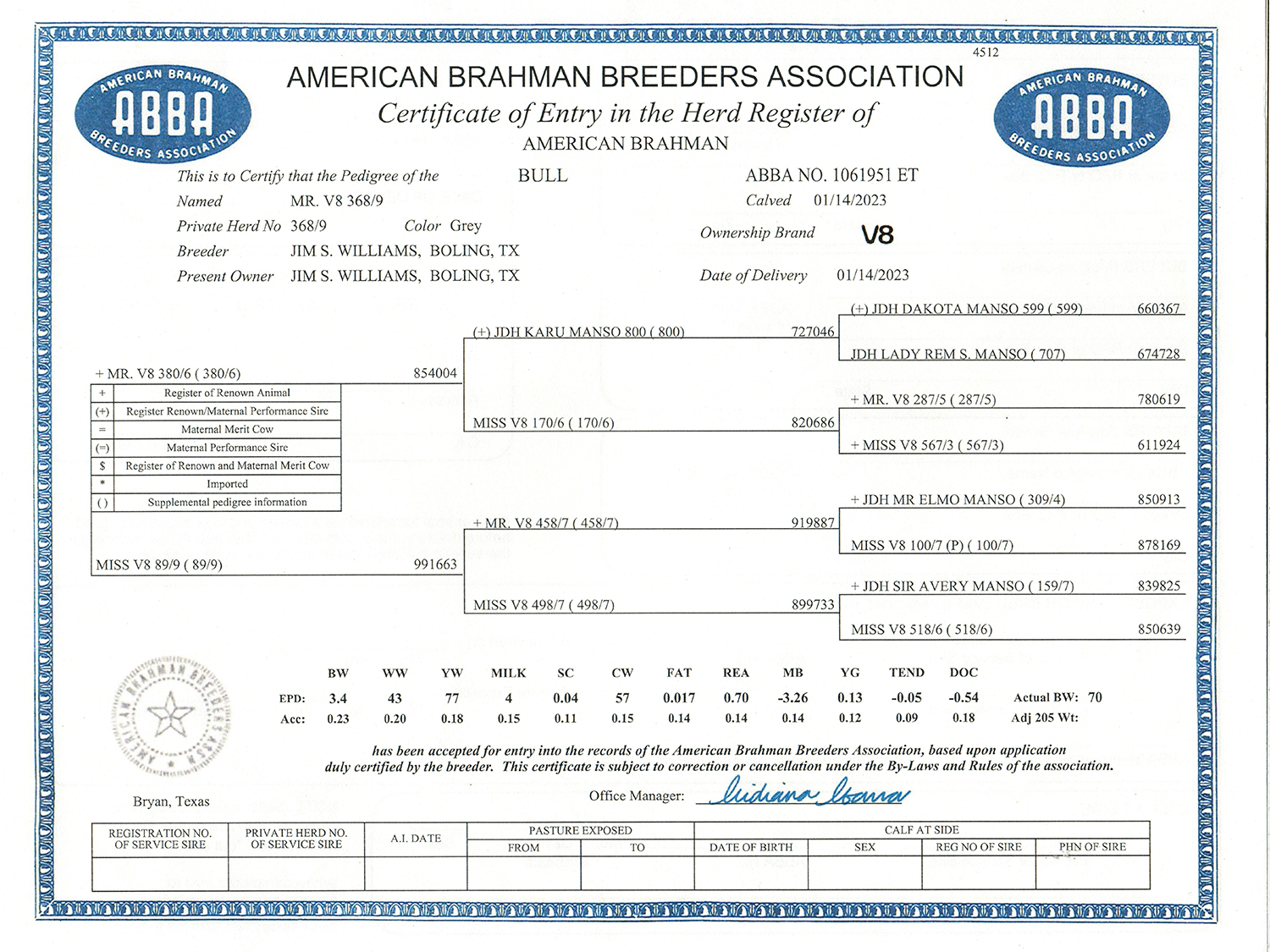
Percentile rankings and breed averages
In addition to the actual EPD values, breed associations often provide percentile rankings for each trait. Percentile rank tables show where an animal’s EPD falls within the breed, with lower percentiles indicating better genetic merit for a given trait. For example, a Brahman bull with a weaning weight EPD in the top 10th percentile would be expected to produce calves with higher weaning weights compared to 90% of the other animals in the breed.
Breed averages serve as useful benchmarks for evaluating an animal’s EPDs. By comparing an individual’s EPDs to the breed average, Brahman breeders can gauge the animal’s relative genetic merit and make informed selection decisions based on their specific breeding goals.
Economically relevant traits and selection indices
While EPDs are available for a wide range of traits, focusing on economically relevant traits (ERTs) is crucial for Brahman breeders. ERTs are traits that directly impact a cattle operation’s profitability, such as growth rate, carcass merit, and reproductive efficiency. By prioritizing ERTs in selection decisions, Brahman breeders can improve the genetics of their herds in areas that have the biggest financial impact on their operations.
Selection indices, which combine multiple EPDs into a single index value, provide a streamlined approach to genetic selection. These indices are designed to optimize genetic progress for specific breeding objectives, such as terminal or maternal production. By utilizing selection indices, Brahman breeders can make balanced selection decisions that align with their overall breeding goals.
What does $Bull & $Queen mean?
The $Bull Index is a tool that helps breeders choose animals best suited for producing calves that will be sold based on their carcass quality and weight. This index emphasizes carcass weight the most, which means that animals with higher $Bull Index scores will likely be bigger and grow faster.
The $Bull Index also takes into account birth weight (BW), calving ease (CE), and the difference between birth weight and weaning weight (WW). This helps breeders find cattle that have calves with lower birth weights, which can make calving easier while still having good growth potential. Additionally, the $Bull Index considers scrotal circumference (a measure of fertility) and docility (how easy the animal is to handle), along with some influence from carcass traits.
The main purpose of the $Bull Index is to help breeders identify cattle that would be good for producing bulls that can be easily sold to commercial or purebred cattle producers.
The $Queen Index is a tool that helps breeders select cows with a well-rounded set of traits for maternal purposes. Using this index to choose replacement heifers (young females that will be kept in the herd for breeding) won’t increase the mature size of the herd or change milk production. This is because the $Queen Index doesn’t give any extra weight to frame score, milk production, or back fat.
Compared to the $Bull Index, the $Queen Index emphasizes scrotal circumference, docility, and calving ease. These traits are important indicators of when an animal will reach puberty and how easy it will be to manage.
In short, the $Queen Index is a way to identify the best cattle to keep as replacement heifers for building and maintaining a high-quality cow herd.
Customizing selection strategies
While EPDs are a vital tool in Brahman breeding, it is essential to recognize that a “one-size-fits-all” approach rarely produces the best results. Brahman breeders must tailor their selection strategies to their specific production environment, management practices, and breeding objectives.
For example, a Brahman breeder focused on producing replacement heifers may prioritize maternal traits such as calving ease and maternal milk, while a breeder targeting the terminal market may place greater emphasis on growth and carcass traits. By aligning EPD selection with specific breeding goals, Brahman breeders can maximize genetic progress and profitability within their unique production systems.
The Importance of Balanced Selection
Breeders must avoid single-trait selection. Focusing solely on one trait, such as growth rate or milk production, can lead to unintended consequences and negatively impact other economically important traits.
Brahman breeders should strive for balanced selection, considering multiple traits simultaneously to optimize overall herd performance. This holistic approach ensures that genetic progress is made in a sustainable and efficient manner without compromising the overall productivity and profitability of the Brahman herd.
“The day may come when the art of breeding cattle can be automated, but today, the eye of the master still plays an important role in pedigreed livestock.”
While EPDs are a powerful tool for genetic improvement, it’s essential to remember that they are only one part of the equation when it comes to selecting breeding animals. Here’s an example. Little Knox Neumayr has five favorite foods: pizza, strawberries, sirloin, black drum fish, and sausage. Picture each of those as EPDs. Now, if you were to take those five foods and put them into a blender, you probably won’t like what you get. So in terms of EPDs, an animal with outstanding EPDs may not necessarily have the physical characteristics, temperament, or overall functionality that align with your breeding goals. Therefore, it’s crucial to use EPDs in conjunction with visual appraisal, pedigree analysis, and a thorough understanding of your specific needs to make well-rounded selection decisions.
EPDs in a Nutshell
EPDs have revolutionized the Brahman cattle breeding industry, empowering breeders to make data-driven selection decisions that drive genetic progress and enhance herd performance. Brahman breeders can position themselves at the forefront of the industry by understanding the intricacies of EPDs, their breed-specific applications, and the tools available for genetic evaluation.
As genomic technologies continue to advance and breed associations refine their evaluation methods, the potential for genetic improvement within the Brahman breed remains vast. By staying informed, utilizing the latest tools and technologies, and adopting a balanced selection approach, Brahman breeders can successfully navigate the ever-evolving landscape of cattle breeding and secure a prosperous future for their operations.
For nearly 80 years, V8 has been vanguards in the American Brahman cattle industry. Our dedication to intentionally breeding our cattle has yielded some truly great animals. For example, Mr. V8 996/7 “Vaquero” has a Calving Ease Direct EPD of 6.17, making him an ideal natural service sire for our show barn. We often pair him with heifers to sire cattle with show-ring potential, muscle, performance, and overall look. In fact, he’s such a popular bull that his initial semen offering sold out in only four hours when first introduced to the U.S. market in 2020.
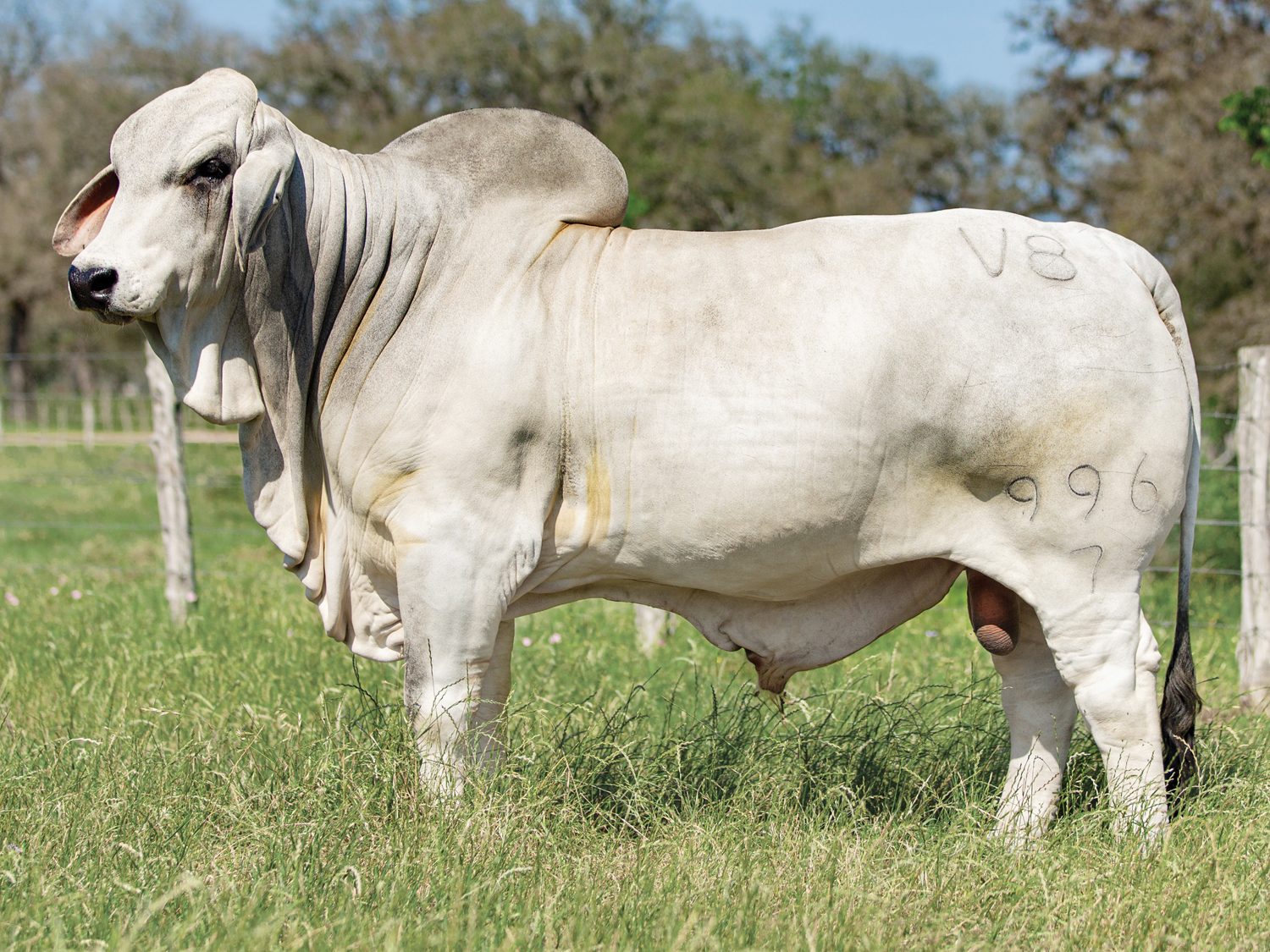
We are deeply committed to producing top-notch Brahman cattle, using EPDs as part of our strategy.
If you are new to Brahman breeding or looking for recommendations on which animals to integrate into your herd, we’re here to help.
Contact us for more information on V8’s premier Brahman cattle and our signature genetics program.

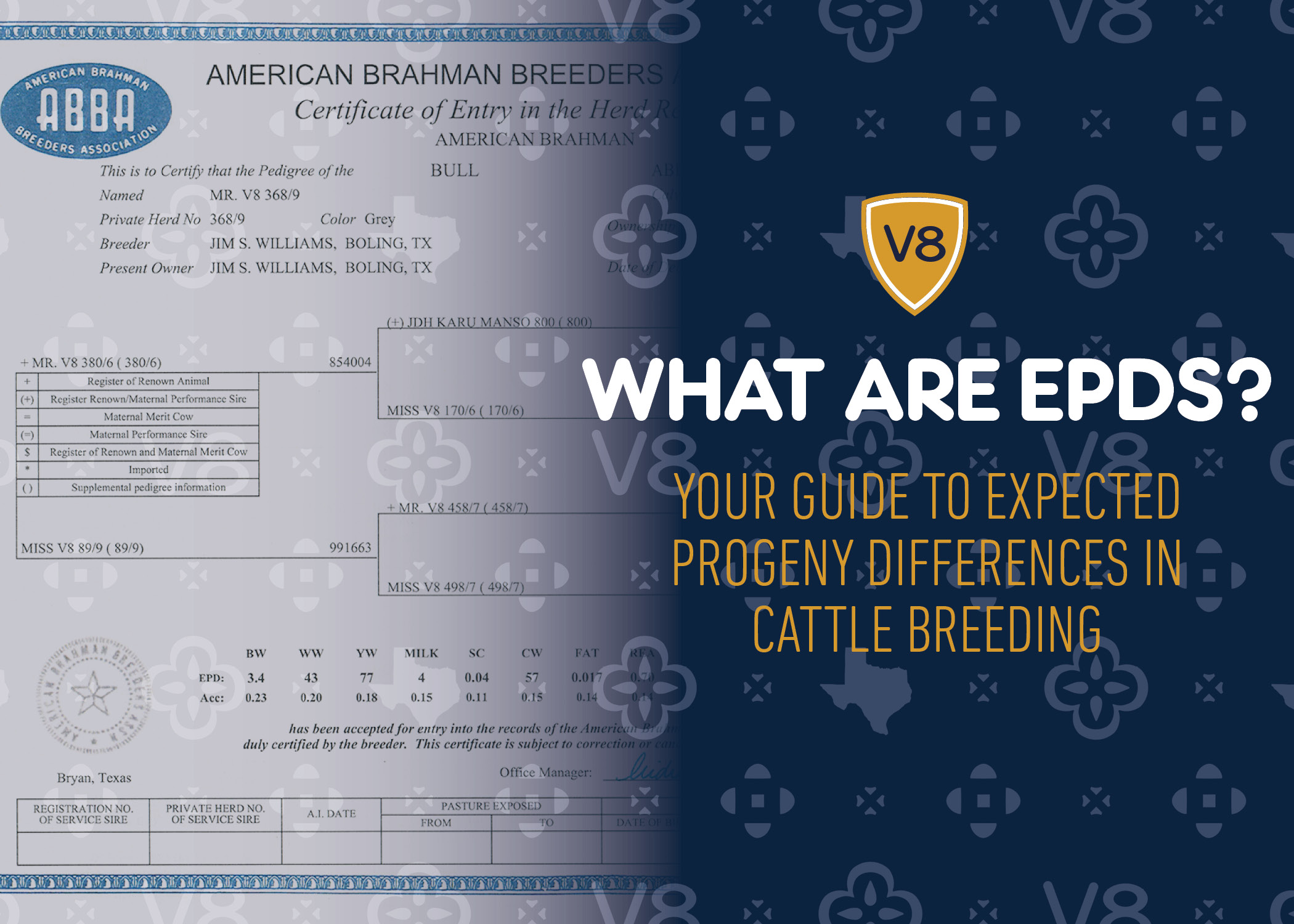
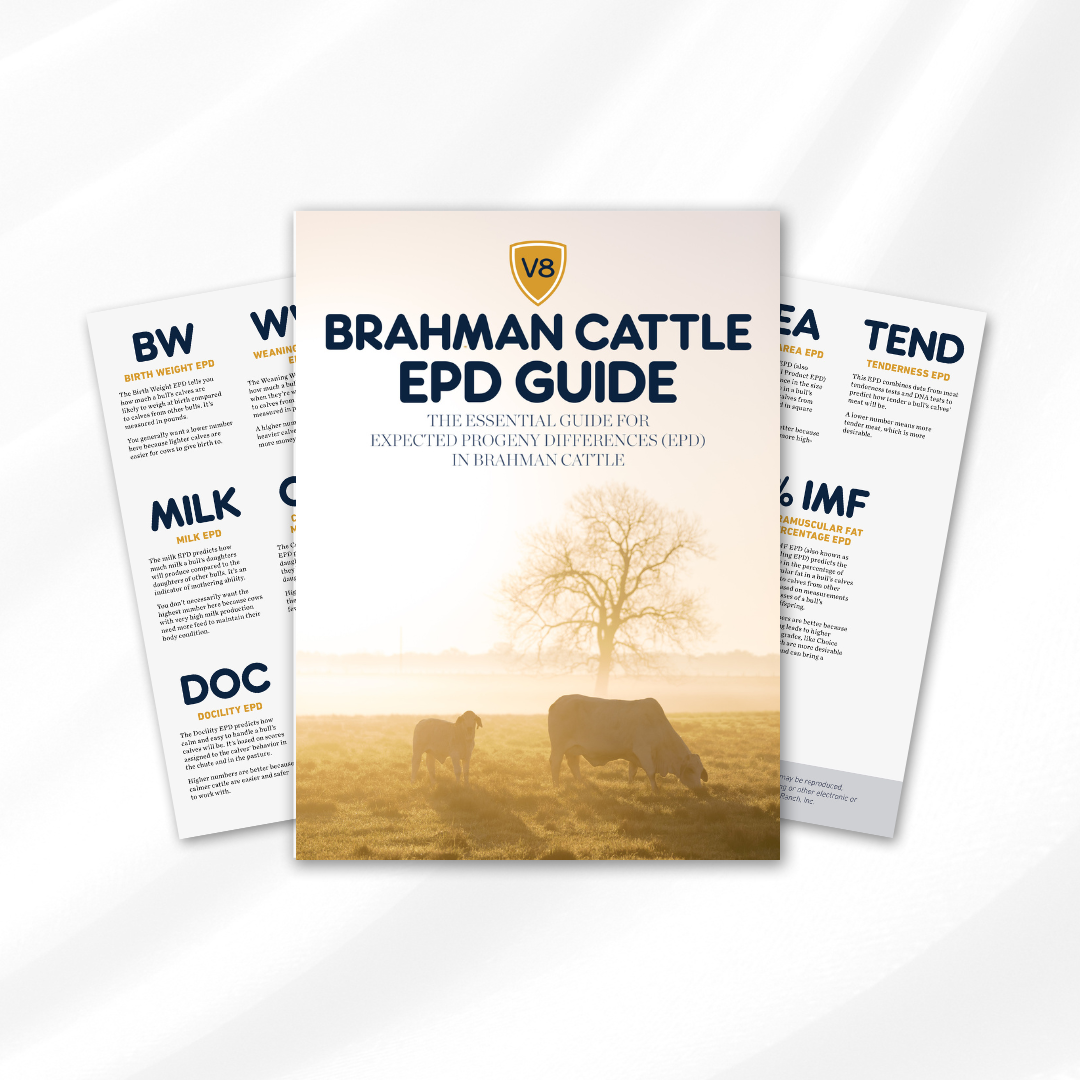
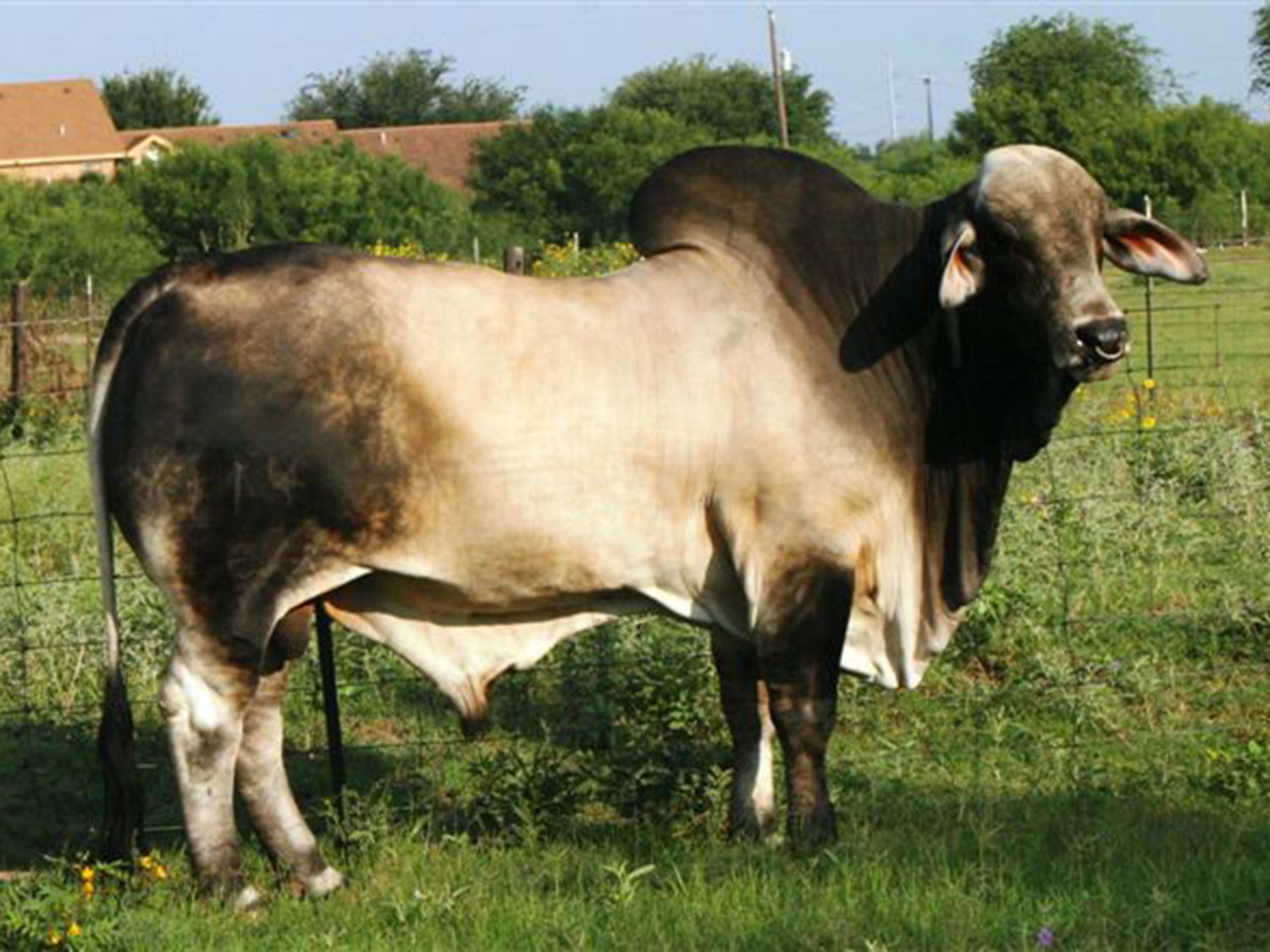
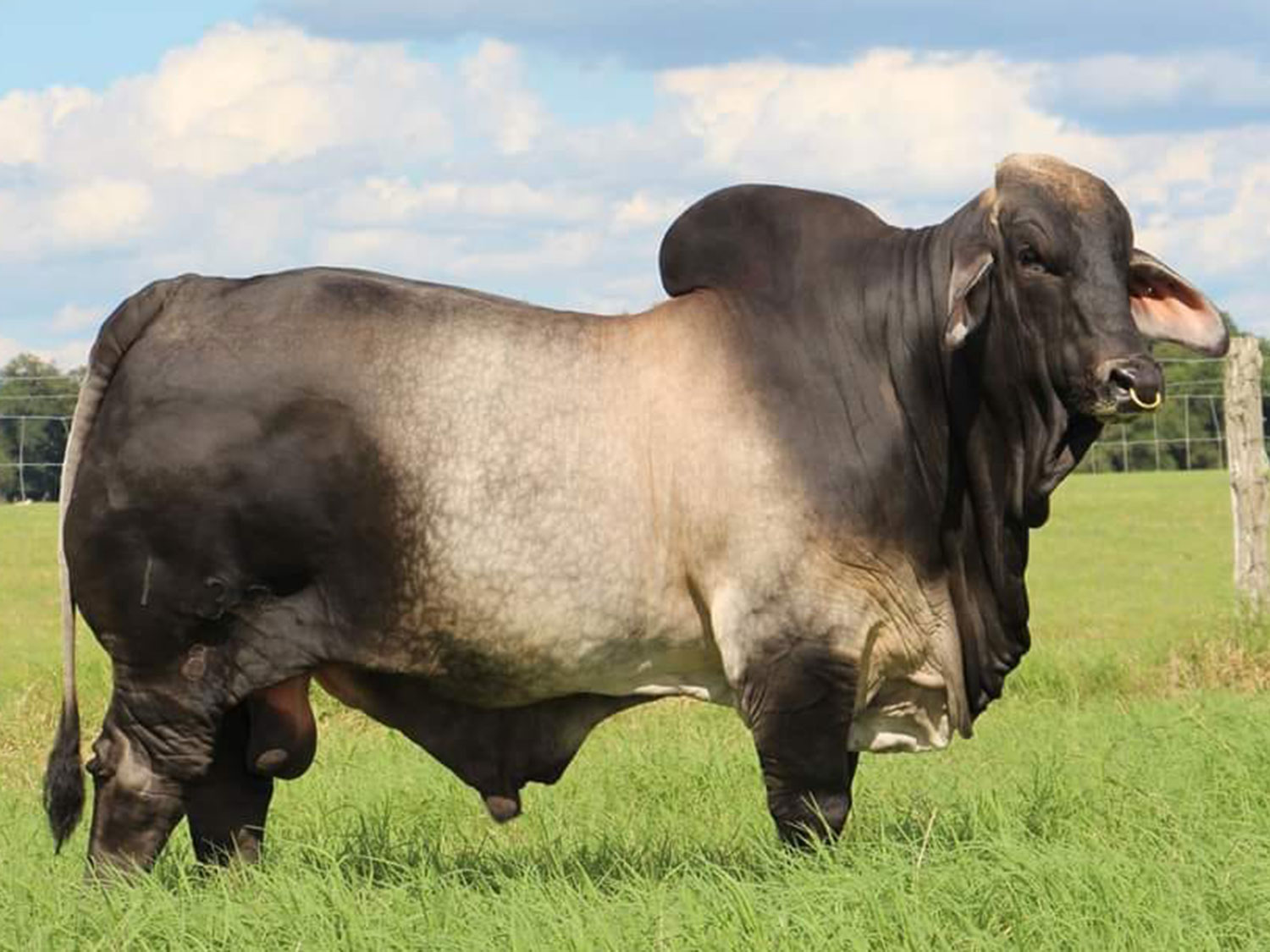
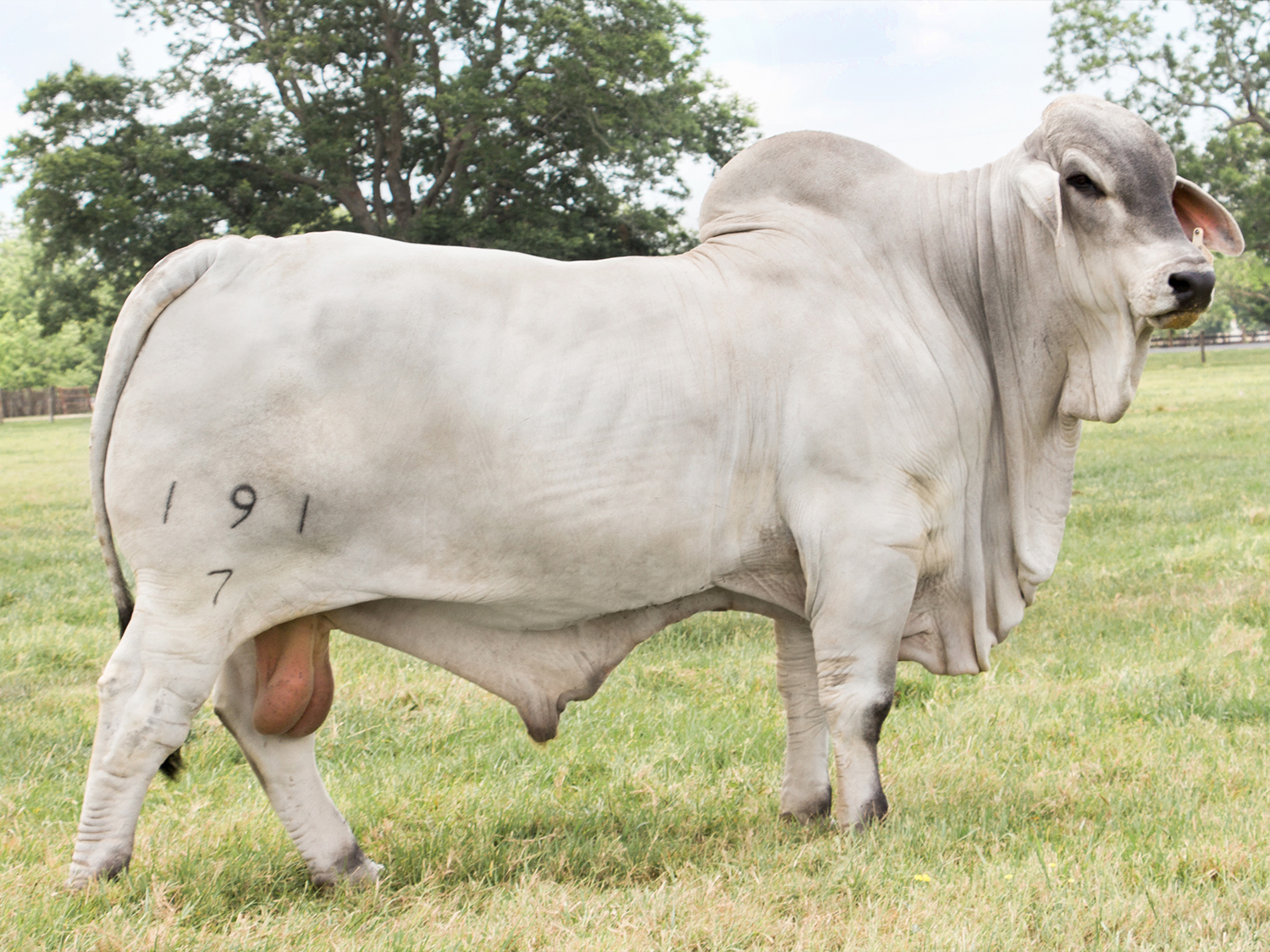
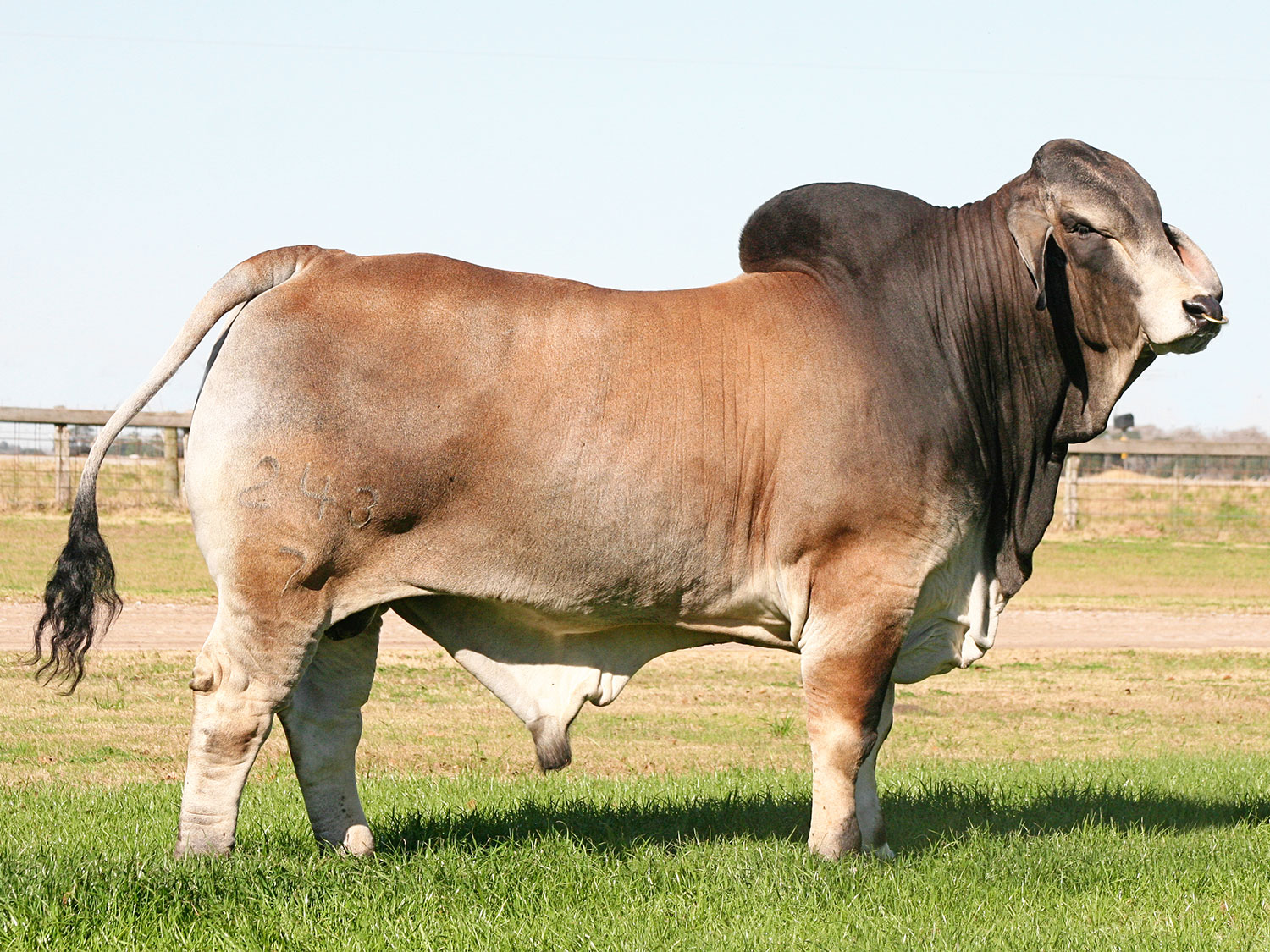
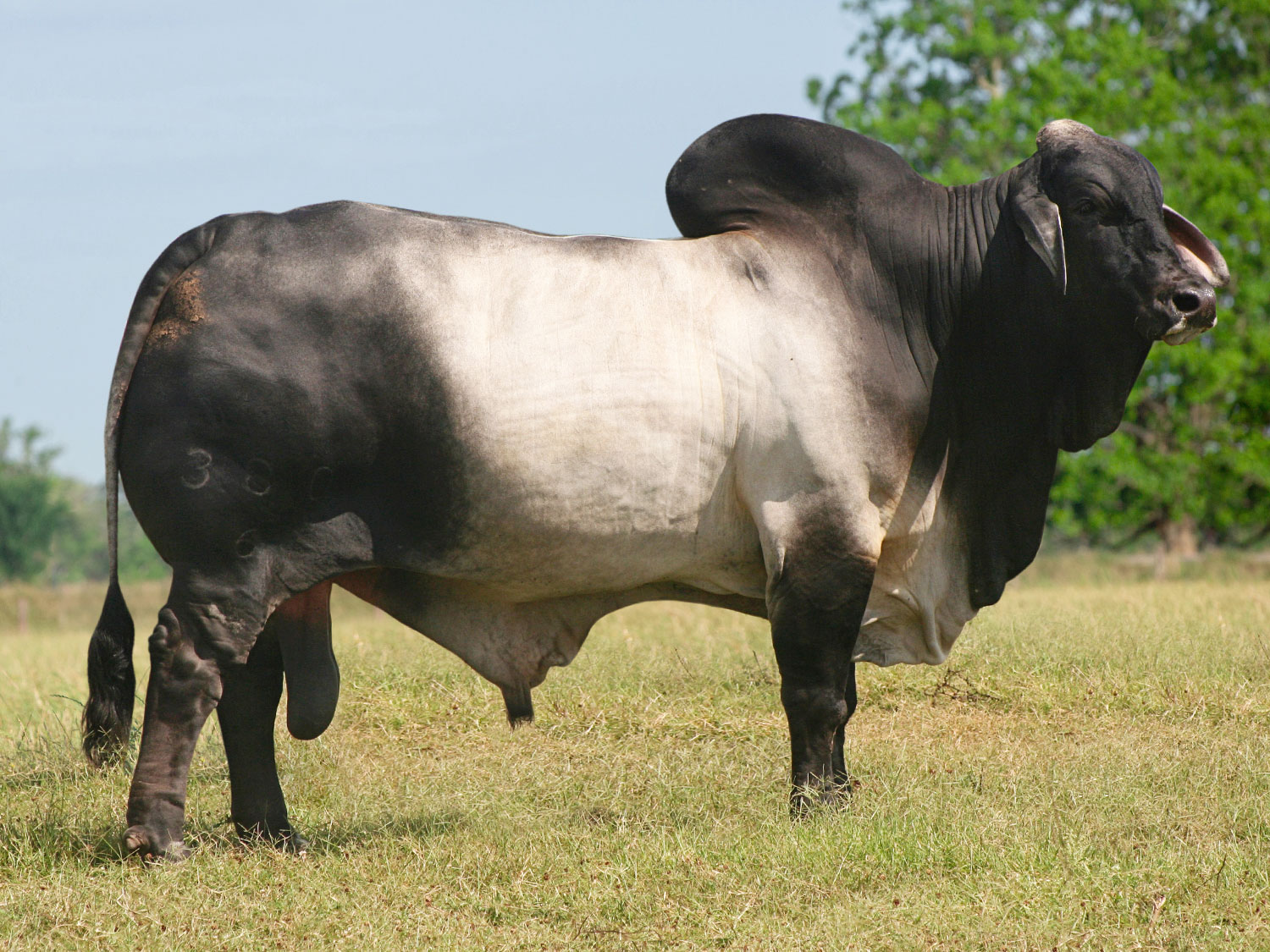
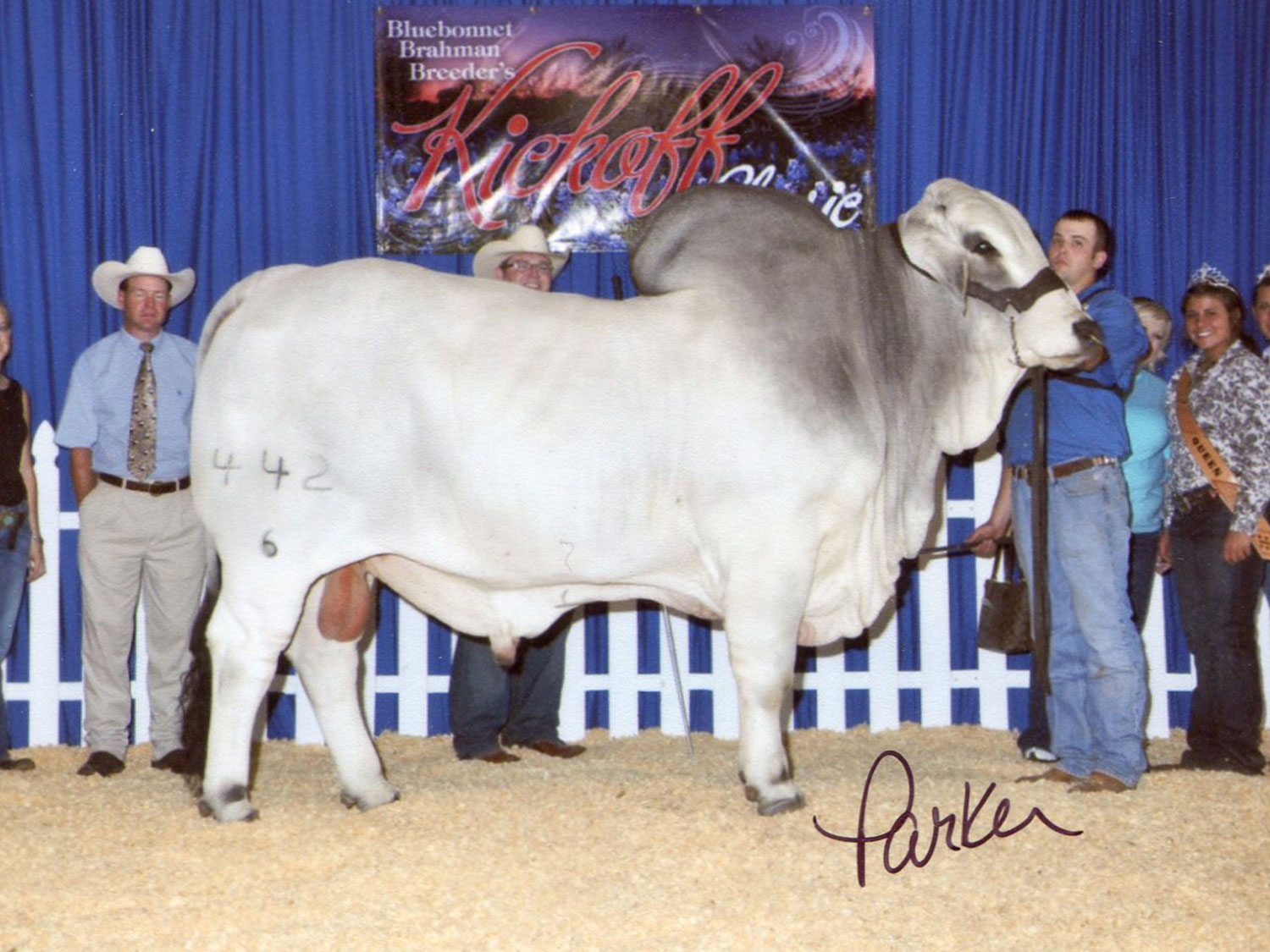
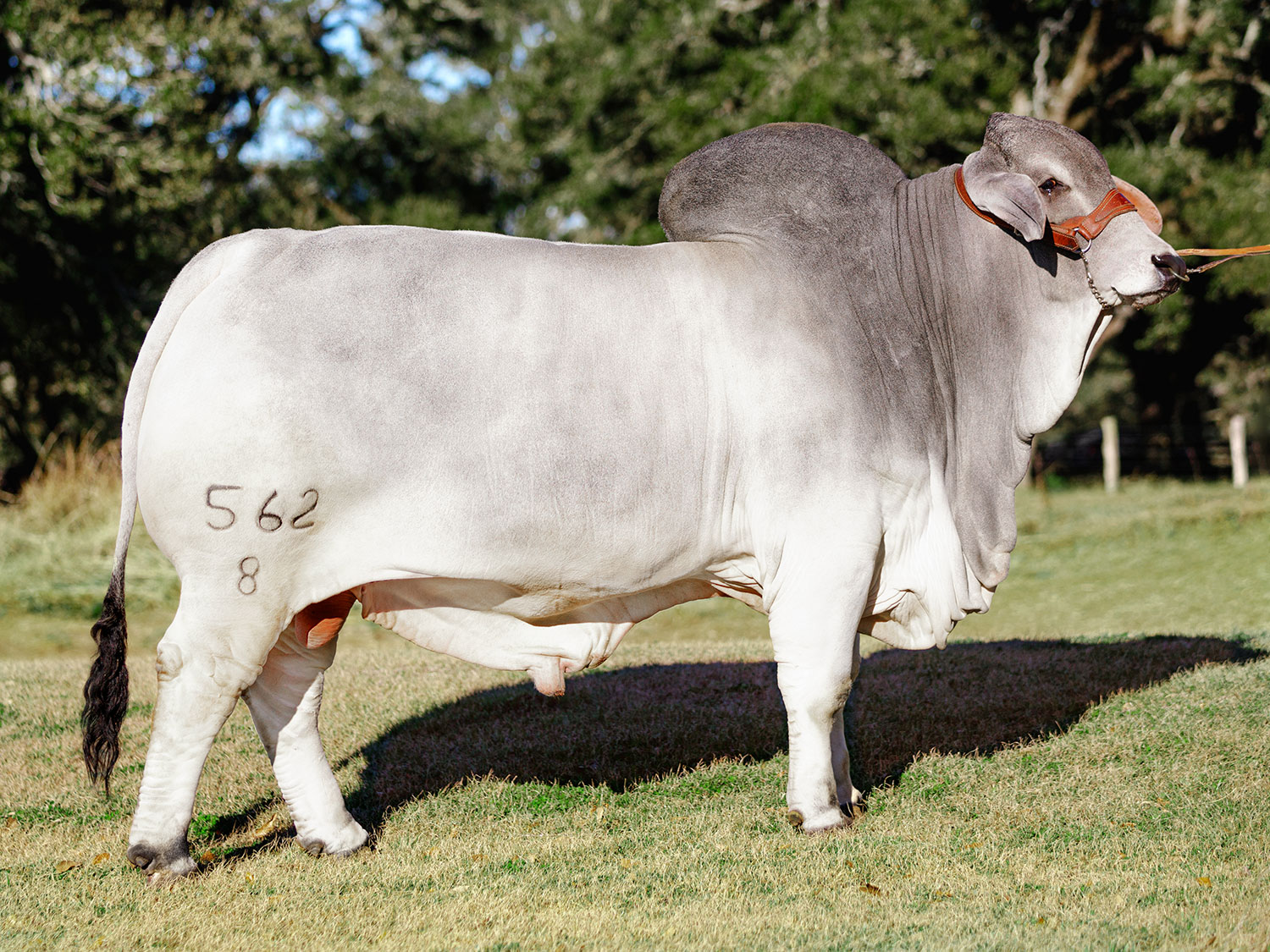
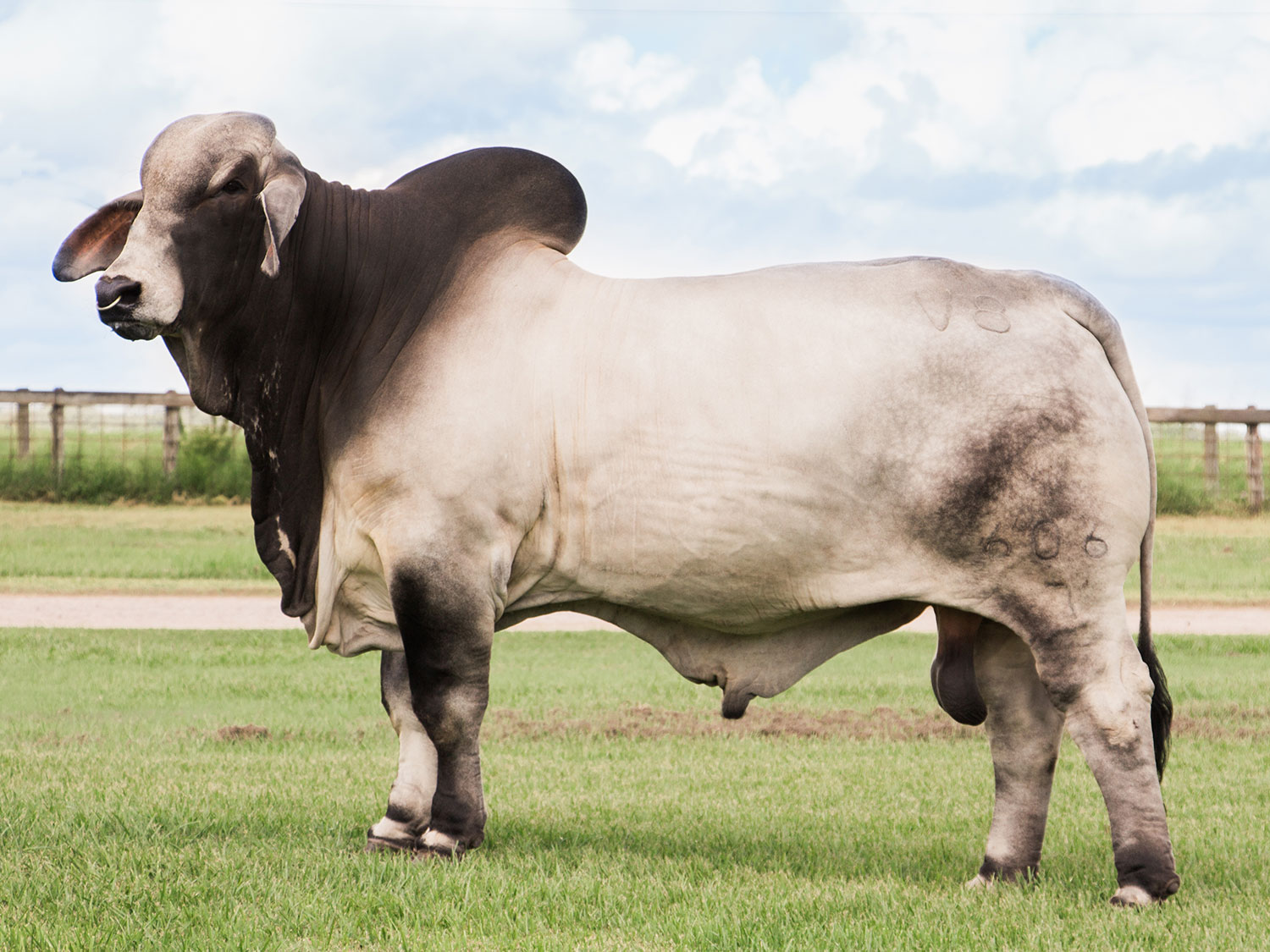
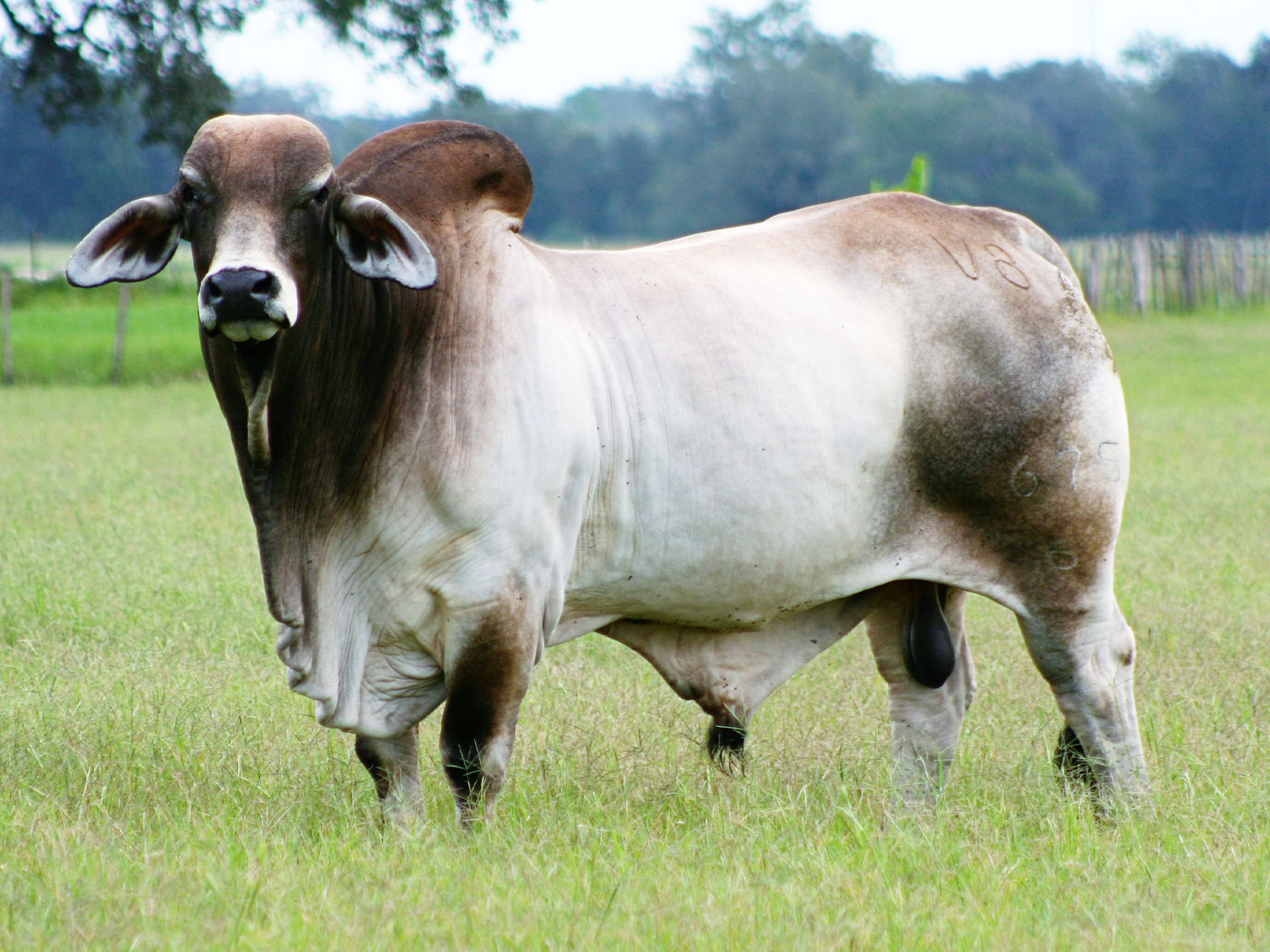
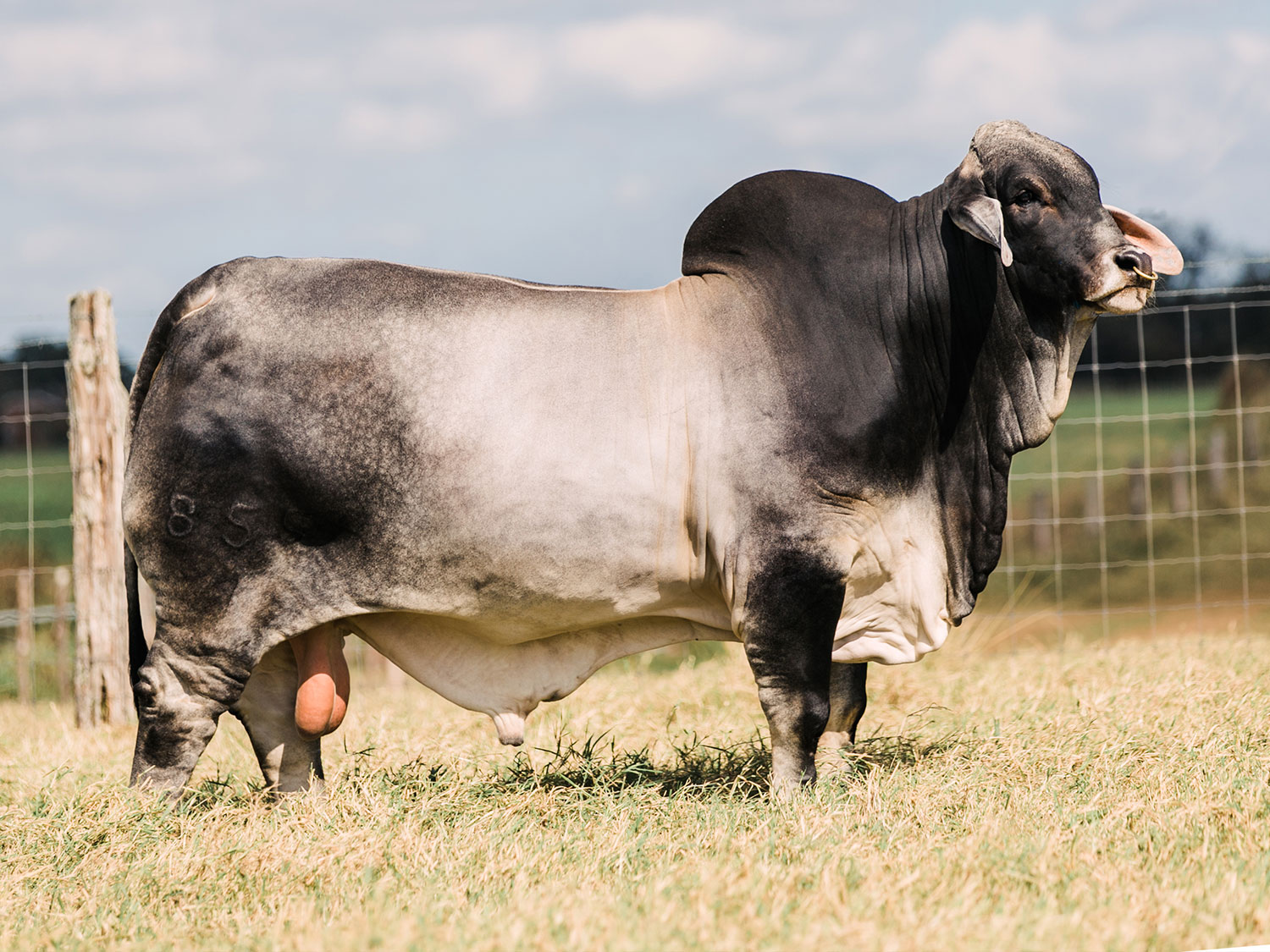
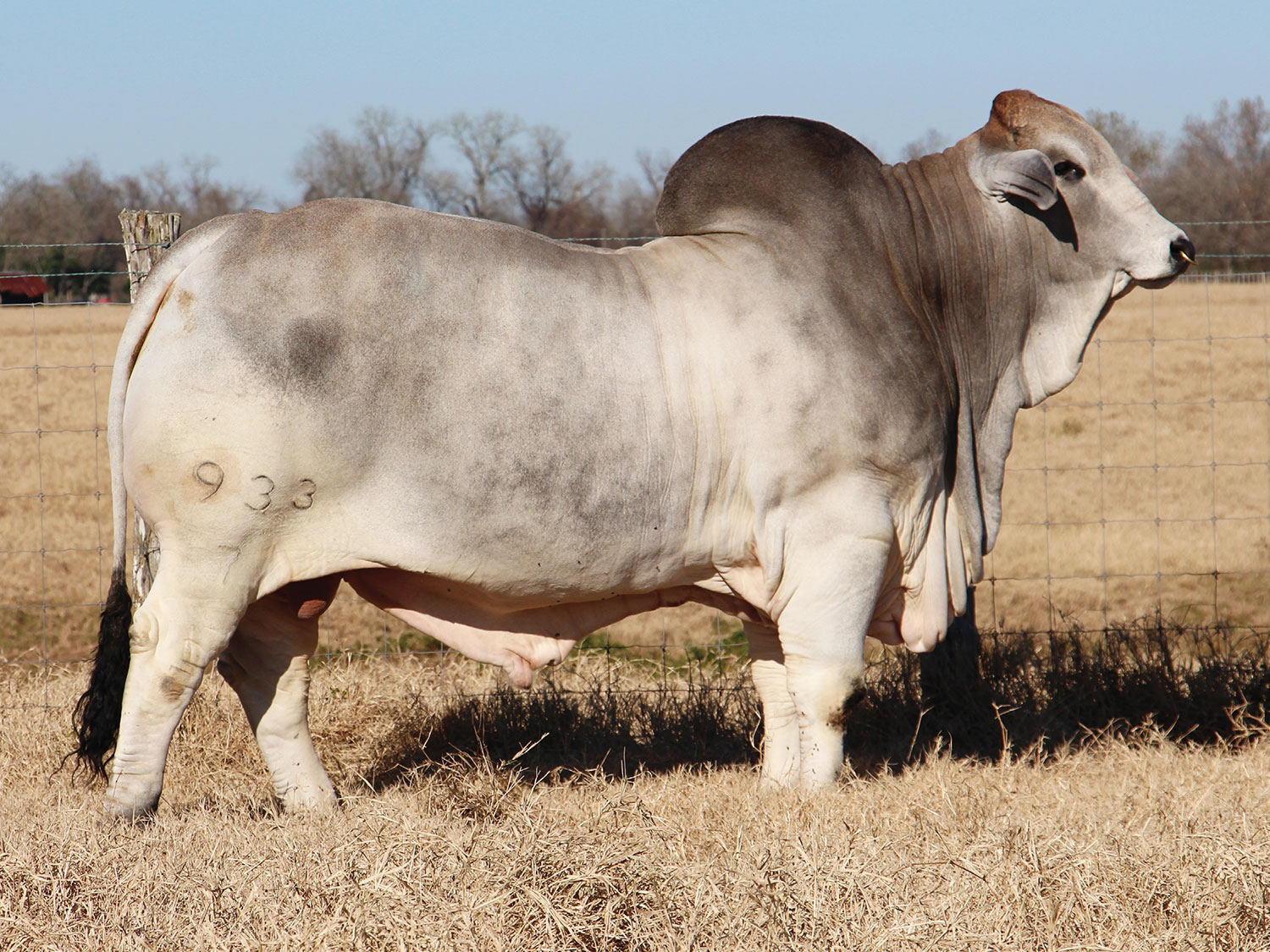




0 Comments